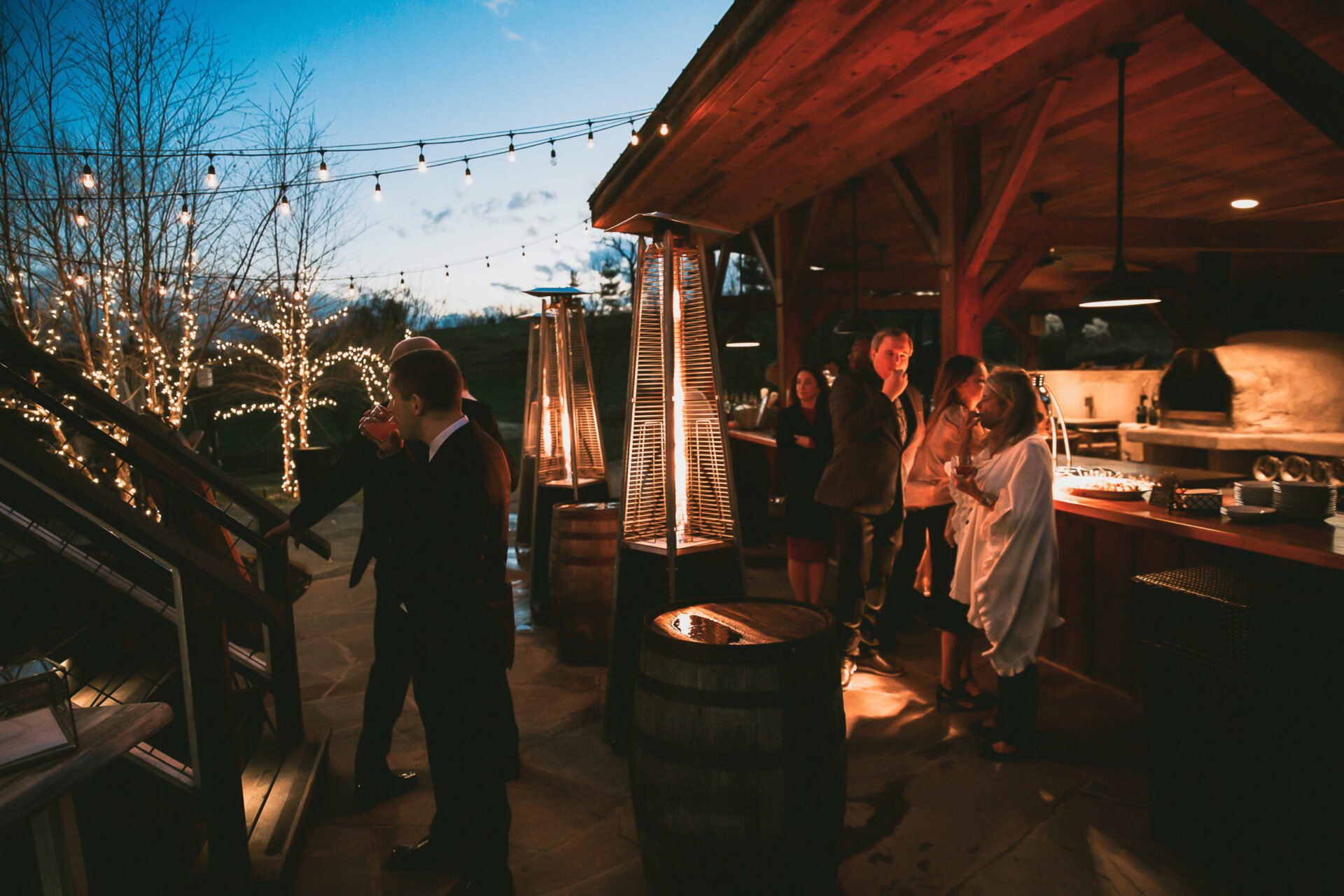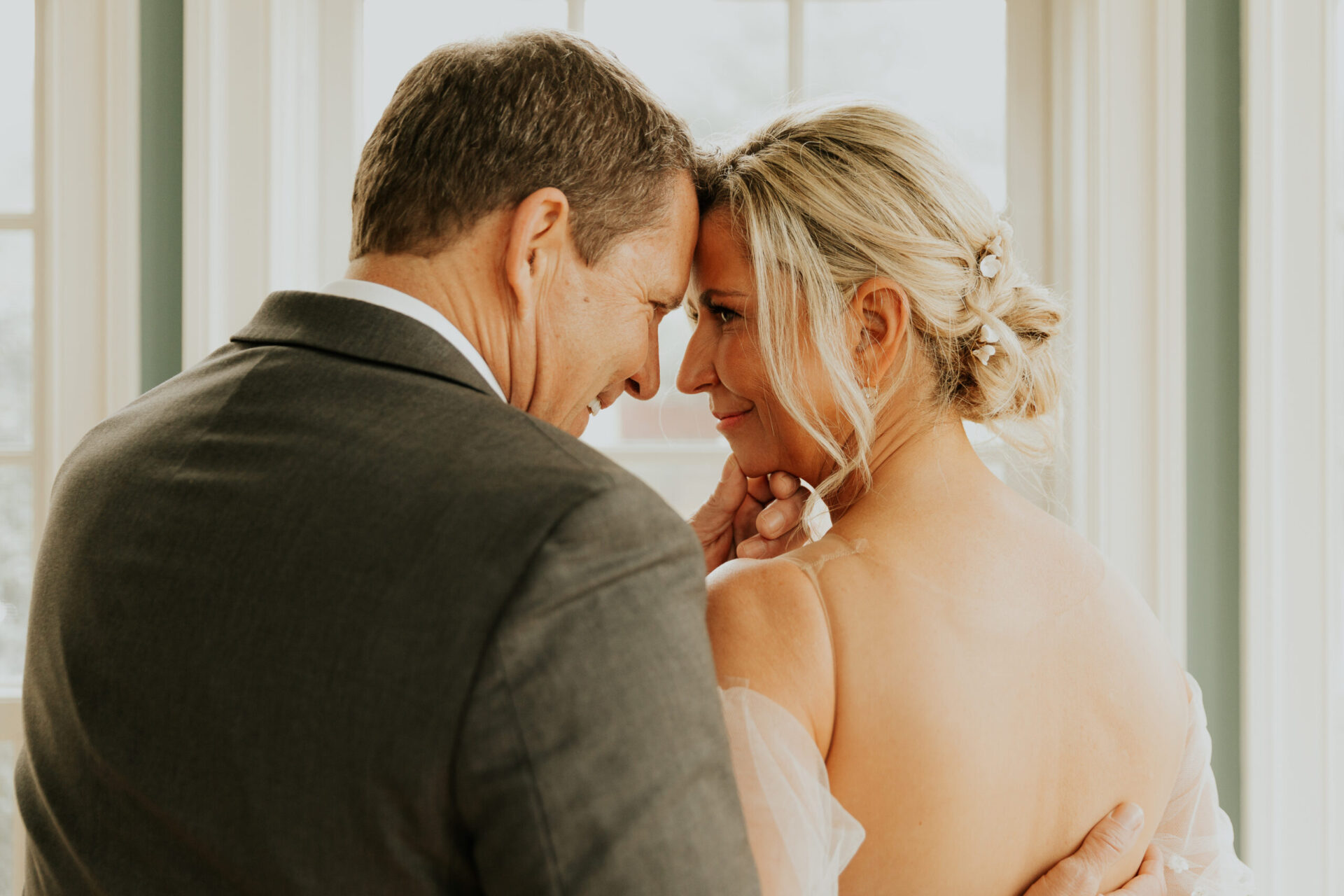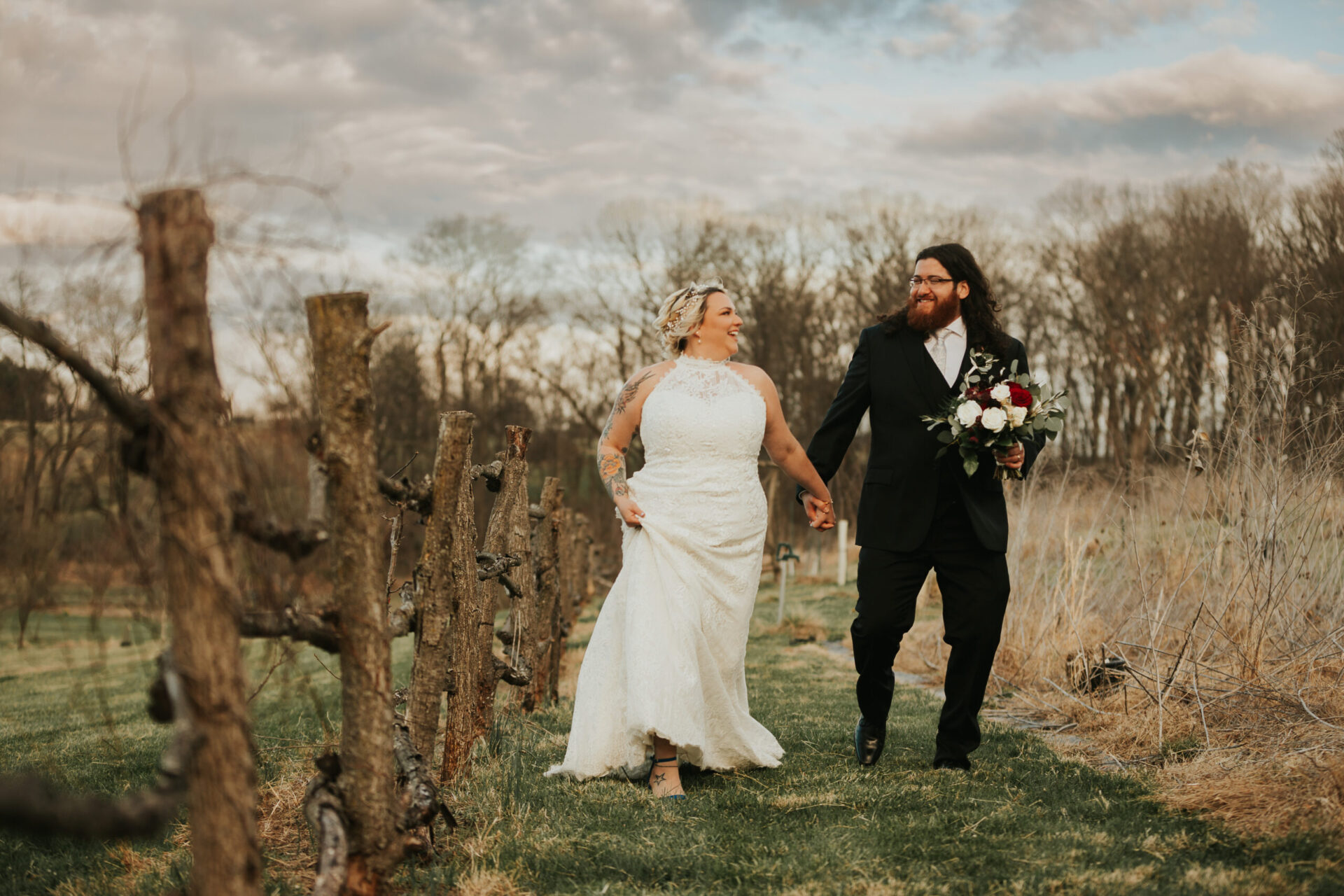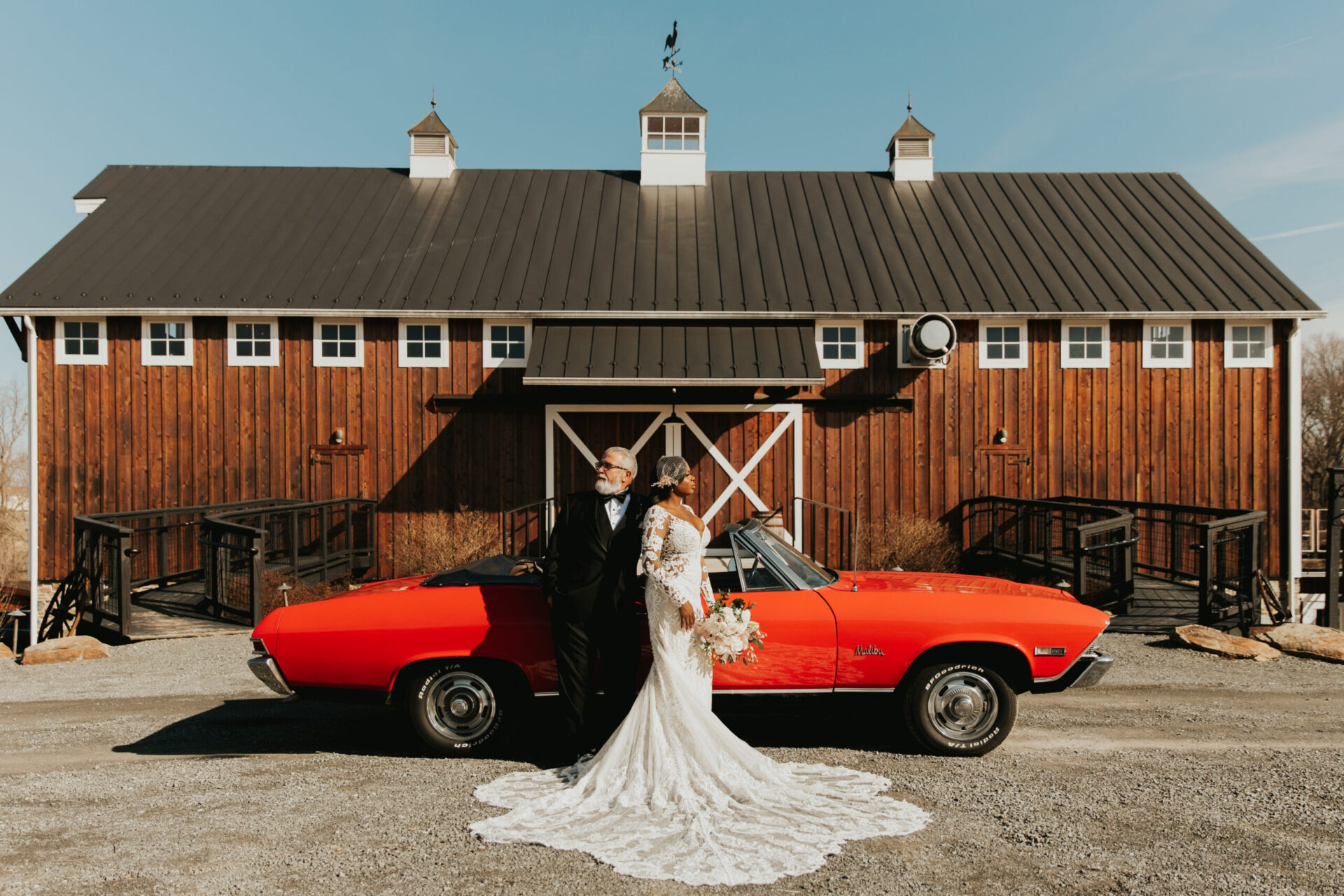By Terry Meadows
Table of Contents
4 minute read
Are you dreaming of a winter wonderland for your wedding but unsure where to start with the planning?
If you’re feeling overwhelmed by the thought of coordinating a wedding amid the chill of winter, you're not alone. Many couples find themselves navigating unique challenges when planning a nuptial celebration during the colder months.
At Zion Springs, we've turned these challenges into opportunities, creating enchanting winter weddings that combine romance and practicality. With over 400 weddings under our belt, we are experts in crafting unforgettable winter nuptials, transforming the chill of the season into a warm, enchanting celebration that you and your guests will treasure forever.
In this guide, we'll walk you through the essential steps of planning a winter wedding, from selecting a cozy venue equipped for the season to ensuring your guests stay comfortable and enchanted throughout your special day. From the stunning visual appeal of a snowy landscape to the cozy intimacy that colder weather brings, we'll show you how to make the most of this beautiful season.
1 - Choosing a Heated Venue for a Comfortable Winter Wedding
Choosing the venue for your wedding is one of your earliest decisions. The images of a cozy snowy scene are enticing, but not if everybody is shivering and cold. A venue with robust indoor facilities is essential to shield everyone from the whims of winter weather.
Ensuring Warmth and Comfort
Ensure that the site you choose is not only visually stunning but also practically equipped to provide a warm, inviting atmosphere, no matter how frosty it gets outside. This includes checking for adequate heating systems tailored to accommodate your guest list, ensuring everyone from the front row to the last feels enveloped in warmth.
Catering to Winter Tastes
When it comes to catering, winter weddings often feature menus brimming with hearty, comforting dishes. Your venue should have the necessary amenities to maintain the optimal temperature of your food, keeping those savory flavors and aromas intact.
Utilizing Seasonal Decor
A venue adorned with elegant holiday décor can add a magical touch to your celebration, eliminating the need for extensive additional decorations. Embrace the charm and craftsmanship of pre-existing seasonal adornments to enrich your wedding's aesthetic while allocating your budget more efficiently to other aspects of your big day.
Preparing for Winter Contingencies
Don’t forget to inquire about contingency plans. Reliable venues should have backup generators to counter any unexpected power outages and a clear strategy for dealing with snow and ice, including snow removal services. Additionally, it's prudent to discuss their policies on rescheduling, particularly if a severe snowstorm necessitates postponing your wedding. By addressing these details, you ensure that your winter wedding is not only beautiful but also seamlessly executed, regardless of weather surprises
.Having chosen a venue that perfectly encapsulates the winter wonderland theme while ensuring warmth and comfort, let's now turn our focus to keeping everybody comfortable and warm.


2 - Essential Tips for Weather-Proofing Your Winter Wedding
While meticulously planning your winter wedding, it's important to remember that weather can be a whimsical element, often defying even the most experienced meteorologists. As you set your wedding date months in advance, embracing flexibility and preparing for various weather scenarios is key to a seamless celebration.
Navigating Winter Travel
Bad weather often brings challenging traffic conditions. To mitigate this, consider extra travel time for you and your guests. If possible, hosting your ceremony and reception at the same venue can greatly simplify logistics, reducing the need for travel and ensuring everyone's timely arrival.
Dressing for the Season
The choice of your wedding attire plays a significant role in comfort. Opt for a wedding dress that balances elegance with warmth. If you prefer a less covered style, like a strapless gown, complement it with a warm wrap or shawl. Similarly, advise your bridesmaids to choose dresses that are winter-appropriate and consider layering with thick tights for additional warmth during outdoor photo sessions.
Warming Up the Venue
If your chosen venue tends to be cool, inquire about additional heaters to maintain a cozy temperature. Enhance the ambiance and warmth with seasonal treats like hot toddies and hot chocolate, and check for guest amenities like throw blankets, fire pits, and heating stands.
Travel Considerations for Guests
Inclement weather can affect travel plans, especially for guests coming from afar. Anticipate potential delays in flights and hazardous road conditions. Encourage guests to arrive a day early, allowing for a relaxed start and possibly a warm, informal gathering by the fire.
Providing Safe Transportation
Consider arranging a shuttle service for your guests, offering them a worry-free and safe transit to and from the venue. Ideally, select a venue that offers on-site accommodation to eliminate travel concerns entirely.
Dressing Appropriately
Remind your guests to dress for the winter weather, suggesting coats, wraps, and umbrellas. It’s thoughtful to have extra warm items like blankets or jackets available for those who might need them. Also, ensure that your venue has adequate storage for winter attire, such as coat racks, umbrella stands, or a cloakroom.
After addressing the logistics of winter travel and guest comfort, it's essential to consider how these unique winter elements can be beautifully captured and memorialized. Next, we look at how to make the most of the magical winter light and scenery to create stunning, lasting memories of your special day.


3 - Maximizing Winter Wedding Photography and Videography
Winter weddings offer a distinctive advantage in terms of lighting, which can be used to create a romantic and intimate atmosphere. With shorter days and longer evenings, the opportunity to capture soft, ambient light becomes a key feature in your wedding photography.
Maximizing Natural and Artificial Lighting
It's essential to visit your chosen venue at different times to understand how it interacts with both natural daylight and artificial illumination. This will help you envision the setting for your ceremony and reception, guiding decisions on decor and seating arrangements to best utilize the available light.
Scheduling for Perfect Shots
Choose a photographer experienced in winter photography. Confirm that they are adept at framing and capturing snowy scenes, adding an ethereal quality to your memories. Review their portfolio, particularly their winter wedding work, to ensure their style aligns with your vision. Arrange for your photographer and videographer to start earlier in the day. This ensures that you can capture the gentle glow of late afternoon sun and the enchanting hues of the sunset, adding a magical touch to your wedding photos and videos.
Finding Ideal Photo Locations
Scout your venue for indoor photo spots that can substitute for outdoor settings when it's too cold. Look for features like a cozy fireplace, intimate seating areas, or areas adorned with fairy lights. These elements can infuse your photos with warmth and a sense of winter magic.
If you do venture outside for photos, consider bringing an extra pair of shoes suitable for walking in snow. This practical step helps protect your elegant wedding shoes while still allowing you to enjoy the beauty of a snowy backdrop.
Having explored the nuances of capturing your winter wedding through photography and videography, our next focus is on how you can intertwine the festive spirit of the holiday season with your wedding celebrations, creating an event that's both joyous and memorable.
4 - Strategically Scheduling Your Wedding During the Holiday Season
Why not take advantage of the joyous feelings that are already part of the holiday season? People often travel and save their vacation days for the time between Thanksgiving and New Year, so it might make sense to you to schedule your wedding when you know most of your guests will be available. Send out your Save-the-Dates early so they can plan appropriately.
If you are not having your wedding close to a holiday, you can take advantage of the lower prices for both travel and accommodation. Many venues offer off-season pricing for their facilities, and this goes for airline ticket prices too. It sounds like a winner all around for those looking to save on their wedding budget.
Try to avoid certain dates as some people may have their own plans. Keep in mind the most common ones are
- Hanukkah – December (movable date)
- Kwanzaa – December 26 and January 1
- Christmas – December 25
- New Year's Eve – December 31
- New Year's Day – January 1
- Martin Luther King Jr. Day – the third Monday of January
- Super Bowl Sunday – typically the first weekend in February (oh, you know that this is a non-negotiable day for some!)
If all of this sounds like a lot of planning for you, have you considered going with an all-inclusive venue where you can focus on enjoying your special day while all the details are taken care of by professionals?


5 - Benefits of Choosing an All-Inclusive Winter Wedding Venue
Opting for an all-inclusive wedding venue offers a multitude of benefits, especially when planning a winter wedding. These venues are designed to provide a comprehensive, hassle-free experience, which becomes even more valuable in the face of unpredictable winter weather.
Streamlining Wedding Logistics
All-inclusive services mean that every aspect of your wedding, from catering to decoration, is managed on-site. This centralized approach significantly reduces the stress and complexity of coordinating multiple vendors, especially important when dealing with potential weather-related delays or disruptions.
Teamwork and Expertise
The staff at an all-inclusive venue typically works as a cohesive unit, bringing together their collective experience and expertise. They are well-versed in handling the unique challenges posed by winter weather, ensuring that any necessary adjustments are made smoothly and efficiently. Their on-site resources and familiarity with the venue allow them to respond swiftly to any changes, maintaining the flow and enjoyment of your special day.
Weather Contingency Planning
When planning a winter wedding, it's vital to consider how the weather might impact not just you and your guests, but also your vendors. All-inclusive venues often have well-developed contingency plans for weather-related issues. In contrast, an à la carte wedding requires you to discuss and coordinate these plans with each separate vendor, which can be a complex and time-consuming process. Choosing an all-inclusive service simplifies this aspect of planning, as the venue will already have strategies in place to deal with potential disruptions, ensuring a seamless and memorable wedding experience regardless of the weather.




